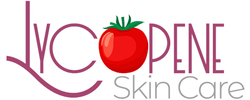
The numerical majority of non-Hispanic white people in the United States have been slowly dropping so that it will be less than half by 2043. In 2015, it is approximately 63%, and that is the major group where skin care products aim their marketing. Detailed studies on the differences in how Caucasian women vs Hispanic women view the psychosocial aspect, behavioral, perceptions and treatment satisfaction with regards to female skin problems are lacking. In years past the Hispanic marketing mimicked Caucasian with only copy changed to Spanish.
We will review the results of studies recently published in an attempt to better inform our readers. In a recent study more than two hundred females enrolled in a study, their ages ranging from 25-48 years of age. Approximately 100 were White/Caucasian women and 23 were Latina/Hispanic women. Facial acne primarily presented on the chin (28%) and cheeks (31%) in Caucasian women versus cheeks (58%) for Hispanic women. A psychological analysis both groups demonstrated some form of depression/anxiety averaging around 70%. Interestingly, more White/Caucasian women were troubled by their acne 89% versus 76% for Latina/Hispanic women with the type of lesion being more of concern to White women than to Hispanic women.
Hispanic women however, were significantly more interested in the hyperpigmentary dark spot complications associated with acne then the Caucasian women, and much more concerned about the elimination of these dark spots. What is striking about this study is the apparent contrast in the lack of concern about acne lesions and the elevated concern about the post-acne breakout complications. We believe this is a result of a lack of understanding of the disease and its complications.
It is important for women with Latino skin types to understand that darker skin types are much more susceptible to post-inflammatory hyperpigmentation with resulting difficult to treat dark spots after repeated breakouts than women with lighter skin types. It is extremely important, therefore, for Latina/Hispanic women not only to effectively treat breakouts, but to try to reduce the frequency and severity of pimples and blemishes in order to reduce the risk of dark spots that result from post-inflammatory hyperpigmentation secondary to repeated breakouts of acne, pimples, and blemishes.
For years the accepted treatment for these complications of acne was hydroquinone, but all recent studies confirm that this form of treatment often causes more problems than it solves. Many women who have used hydroquinone have had rebound hyperpigmentation which is much harder to treat or other related problems. Many people will remember how Michael Jackson had tried to lighten his skin and the “leopard spot” outcome of his efforts – this was a result of using hydroquinone. Several studies also have shown that people using hydroquinone have an increased incidence of contracting skin cancers. It is now banned in 95% of the world and only available in some areas due to the strong lobby mounted by major skin products companies who profit from its sale.
Recent studies by several medical universities have confirmed that the natural ingredients, used for 90 days or more, can be effective in reversing the appearance of dark spots and hyperpigmentation. The main ingredients tested were Azelaic Acid, a natural acid derived from wheat, rye and barley; and especially Kojic Acid which is an inhibitor to the formation of pigment. Azelaic Acid also has the additional effectiveness in helping to eliminate acne.
Products containing at least these two ingredients, along with skin hydrators such as hyaluronic acid, and antioxidants such as lycopene can actually be considered skin perfecting products – those that keep skin in great condition while addressing common problems exhibited by Hispanic women. And these, along with other natural ingredients, can also help fight wrinkles and fine lines.

